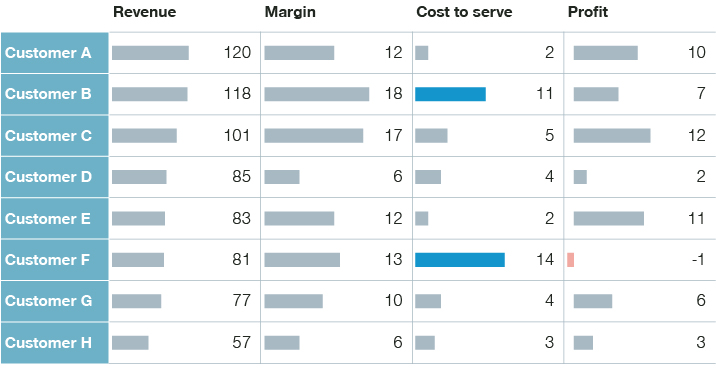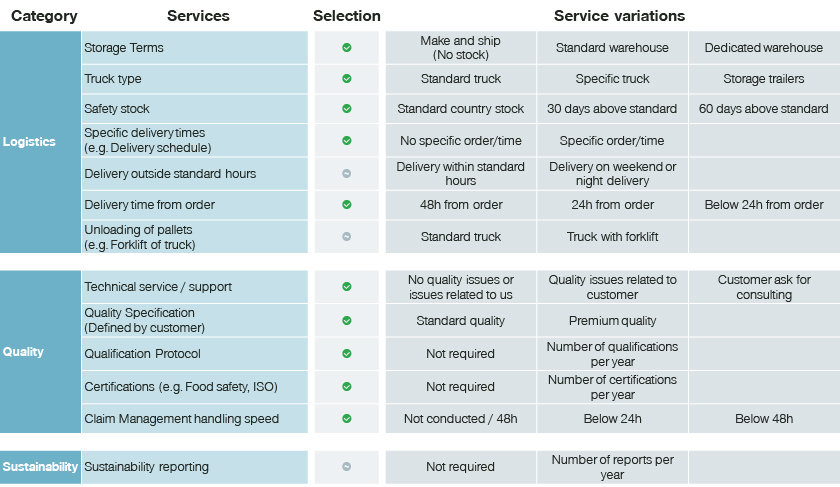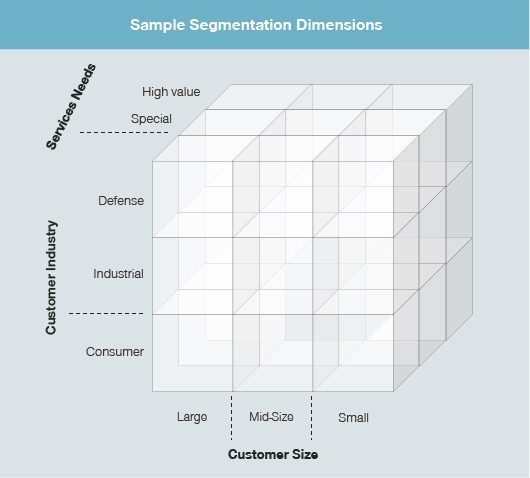B2B industrial companies often fail to realize the full value of services provided to customers, reducing deal profitability and leaving significant money on the table. However, when services become solutions, industrials companies can recover incurred costs, boost profits, and even unlock additional revenue sources.
“Nobody in our company has a clear and standardized overview of the solutions we deliver to customers. The more people we ask, the more different opinions and answers we receive.”
Familiar with this common problem? Then you need a service toolbox.
A service toolbox is a catalog of your full suite of services. It not only provides a more comprehensive understanding of how much your services cost your business. It creates awareness among customers of the services they receive, providing your sales teams with an additional negotiation lever.
Want to find out what happens to your profitability when you recover your service costs? Then let’s walk through Simon-Kucher’s proven “Cost-to-Serve Recovery” approach.
Cost-to-Serve Recovery: Five steps to help your sales team focus on the entire solution package
1. Build a fact base around your services
As an initial step, it’s important to understand the profit opportunity by looking across customers and understanding the cost to serve. Review your financials at the customer level and determine the range of profitability. Then aggregate and calculate lost profit at a company level to determine the overall financial impact.

2. Develop a services catalog
Customers often aren’t aware of all the services they receive. To solve this problem, work with your customer-facing employees to compile a long list of your services and identify whether they are “basic” (e.g., providing no differentiation from the competition), “special” (e.g., no competitor offering, better performance, or clear USP) or “high-value” (e.g., disruptive, game-changing). Then organize these services by common factors such as general support, training, production audits, sustainability elements, line equipment services, and digital add-ons. Once organized into logical groups, you can assess each service and its variations for commercialization.

3. Refine your customer segments
Want to understand your cross-sell opportunities and improve your pricing? By grouping customers based on similar dimensions, you can start making decisions based on willingness to pay. Here you need to review your customer portfolio and identify service needs based on the current support provided and services consumed. There are multiple factors that you can use to generate actionable customer segments
- Demographic: By what the customer buys, what the industry/customer supports, and where the customer is located.
- Contextual: By how important the customer is to your business and to the market, the customer’s growth prospects, and their cost to serve.
- Needs-based: By the customer’s services requirements as well as how they buy and interact with the company.
Segmentation should also correspond with your services catalog. For example, what is considered basic or special also depends on the customer segment, e.g., a basic service level for a key account will most likely be higher than for a small account.

4. Find the right price for your services
Customers consume services extensively when they are given away for free. The moment you put a price tag on services above basic level, your customers have to decide to either stop consuming them or to pay for them. Both have a profit impact. That’s why before generating your services pricing, you should already have a consistent definition of the services you provide – as you would for any product.
This is where market research comes in. It allows you to confirm customer needs and willingness to pay so that you can stop offering costly services for free and determine the right pricing model and metric to monetize them. It also helps you create services bundles that address customer needs and have the best likelihood of adoption.
A variety of proven pricing methods can be used to understand customer willingness to pay and determine optimal services pricing. At Simon-Kucher, we know them all.
5. Prepare for implementation
Almost everything is in place to successfully monetize and manage the costs of your services. But to achieve your target results, you must have a plan to translate strategy into action. Marketing materials are a useful tool to familiarize impacted customers with any changes in your services. It’s also important to keep your teams accountable by assigning them to specific initiatives and properly equipping them to achieve your company’s objectives. For example, if the sales team is tasked with increasing service adoption, they will need playbooks filled with value-selling techniques and best practices to achieve this goal.
Service monetization – get started today
Recovering the costs for services provided can deliver a significant uplift to profitability, and there are several steps you can take to get started:
- Prepare your data: Begin to compile data and create a method to measure cost to serve by customer to quantify future opportunities.
- Engage stakeholders: Reach out to customer-facing stakeholders who are knowledgeable in the services provided to customers and gain a diverse set of perspectives on service commercialization.
- Create the case for change: Structure an argument for services commercialization to gain broader support throughout the organization.
- Garner executive sponsorship: Verify the right degree of support from company leaders to make sure you have the necessary commitment.
How Simon-Kucher can help
Simon-Kucher’s proven “Cost-to-Serve Recovery” approach enables you to quantify the impact of the services you provide and develop a strategy to recover these costs. Reach out to our experts to discuss how your company can unlock better growth through service cost recovery.
Explore all the insights from our B2B Masterclass
Unlock practical strategies in B2B pricing, sales, and marketing








